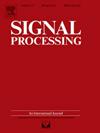三维显示器的焦点感知压缩和图像质量度量
IF 3.4
2区 工程技术
Q2 ENGINEERING, ELECTRICAL & ELECTRONIC
引用次数: 0
摘要
3D显示器能够在没有眼镜和耳机的情况下呈现身临其境的3D内容。显示器根据用户的视角投射不同的视图。用户可以同时看到多个视图,以模拟3D感知。同时投影视图的视觉混合在场景中创建了失焦区域。场景可以显示只有一个聚焦距离,其中的对象显得清晰。本文在数据压缩中利用了这一效应。首先,提出了对3D显示结果进行自动视觉质量评估的几个指标。然后,提出了基于输入视图的场景对焦距离自动检测方法。基于此检测,可以使用景深效果消除失焦区域的高空间频率,或者根据用例使用更高的压缩比压缩这些区域。本文对这些建议进行了比较。进行用户研究以获得对结果的人类评价。所得结果确定了三维显示的最佳视觉质量度量。所提出的压缩被证明对3D显示是有益的,并且能够达到比标准方法更高的压缩比,而不会有可感知的质量损失。本文章由计算机程序翻译,如有差异,请以英文原文为准。
Focus-aware compression and image quality metric for 3D displays
3D displays are capable of immersive 3D content presentation without glasses and headsets. The displays project different views depending on the user’s viewing angle. Multiple views are visible to the user at once to simulate the 3D perception. The visual blending of the simultaneously projected views creates out-of-focus areas in the scene. The scene can be displayed with only one focusing distance, where the objects appear sharp. This paper utilizes this effect in data compression. First, several metrics are proposed for automatic visual quality assessment of the results on the 3D display. Then, automatic detection of the focusing distance in the scene, based on the input views, is proposed. Based on this detection, the high spatial frequencies in out-of-focus areas can be eliminated using the depth-of-field effect, or such areas can be compressed with higher compression ratio, depending on the use case. The paper compares the proposals. A user study is conducted to obtain human evaluation of the results. The results obtained identified the optimal visual quality metric for the 3D display. The proposed compression proved to be beneficial for 3D displays and capable of reaching a higher compression ratio than standard methods without a perceivable quality loss.
求助全文
通过发布文献求助,成功后即可免费获取论文全文。
去求助
来源期刊

Signal Processing
工程技术-工程:电子与电气
CiteScore
9.20
自引率
9.10%
发文量
309
审稿时长
41 days
期刊介绍:
Signal Processing incorporates all aspects of the theory and practice of signal processing. It features original research work, tutorial and review articles, and accounts of practical developments. It is intended for a rapid dissemination of knowledge and experience to engineers and scientists working in the research, development or practical application of signal processing.
Subject areas covered by the journal include: Signal Theory; Stochastic Processes; Detection and Estimation; Spectral Analysis; Filtering; Signal Processing Systems; Software Developments; Image Processing; Pattern Recognition; Optical Signal Processing; Digital Signal Processing; Multi-dimensional Signal Processing; Communication Signal Processing; Biomedical Signal Processing; Geophysical and Astrophysical Signal Processing; Earth Resources Signal Processing; Acoustic and Vibration Signal Processing; Data Processing; Remote Sensing; Signal Processing Technology; Radar Signal Processing; Sonar Signal Processing; Industrial Applications; New Applications.
 求助内容:
求助内容: 应助结果提醒方式:
应助结果提醒方式:


